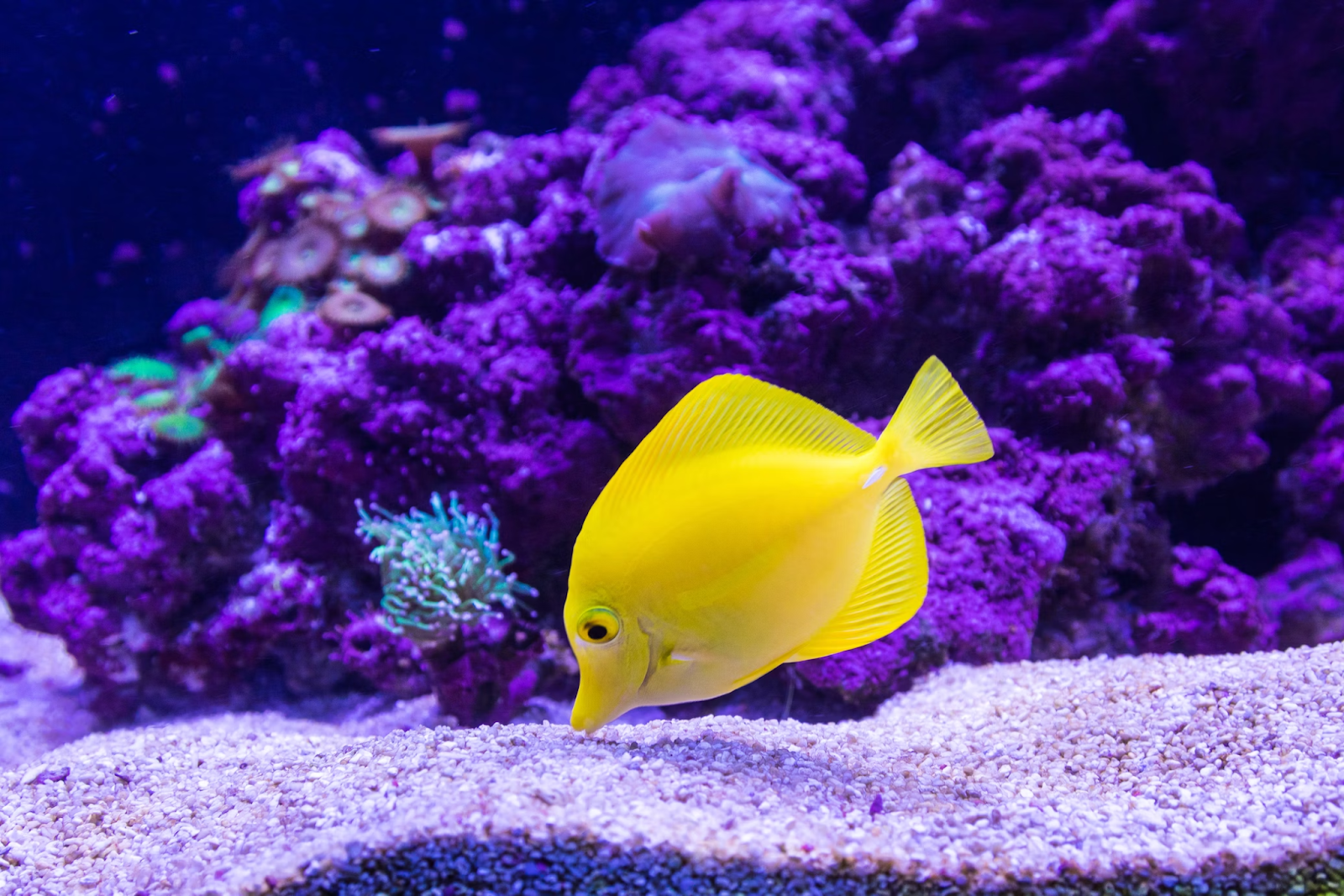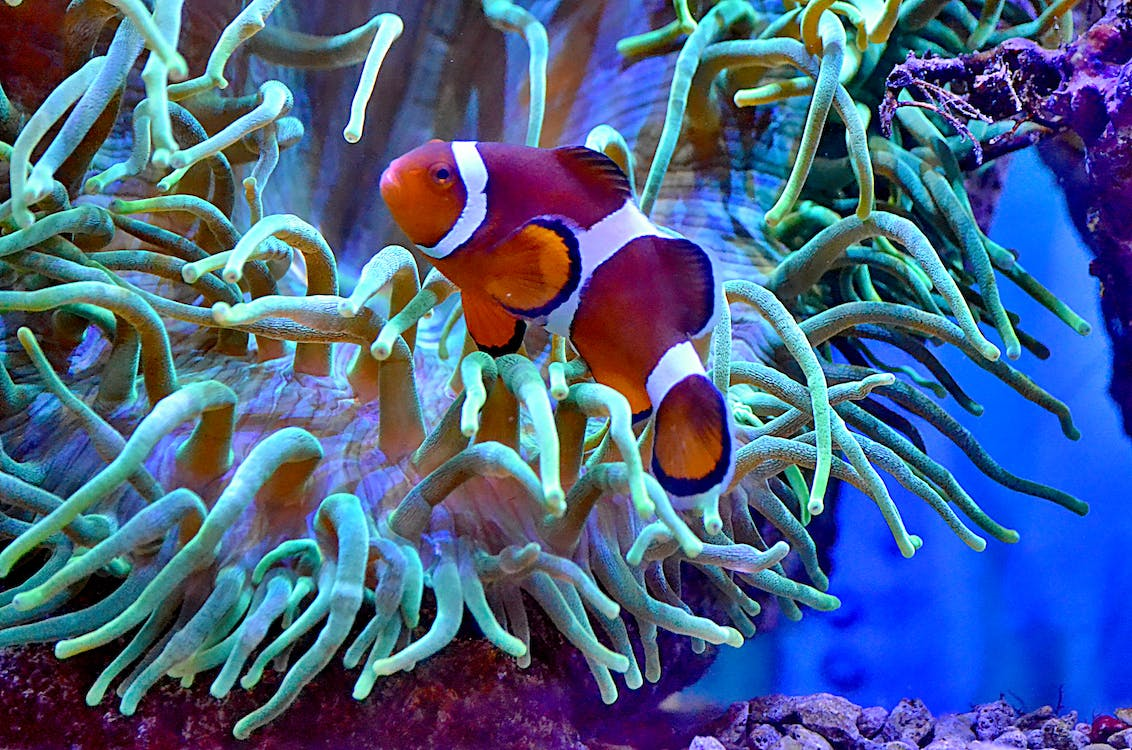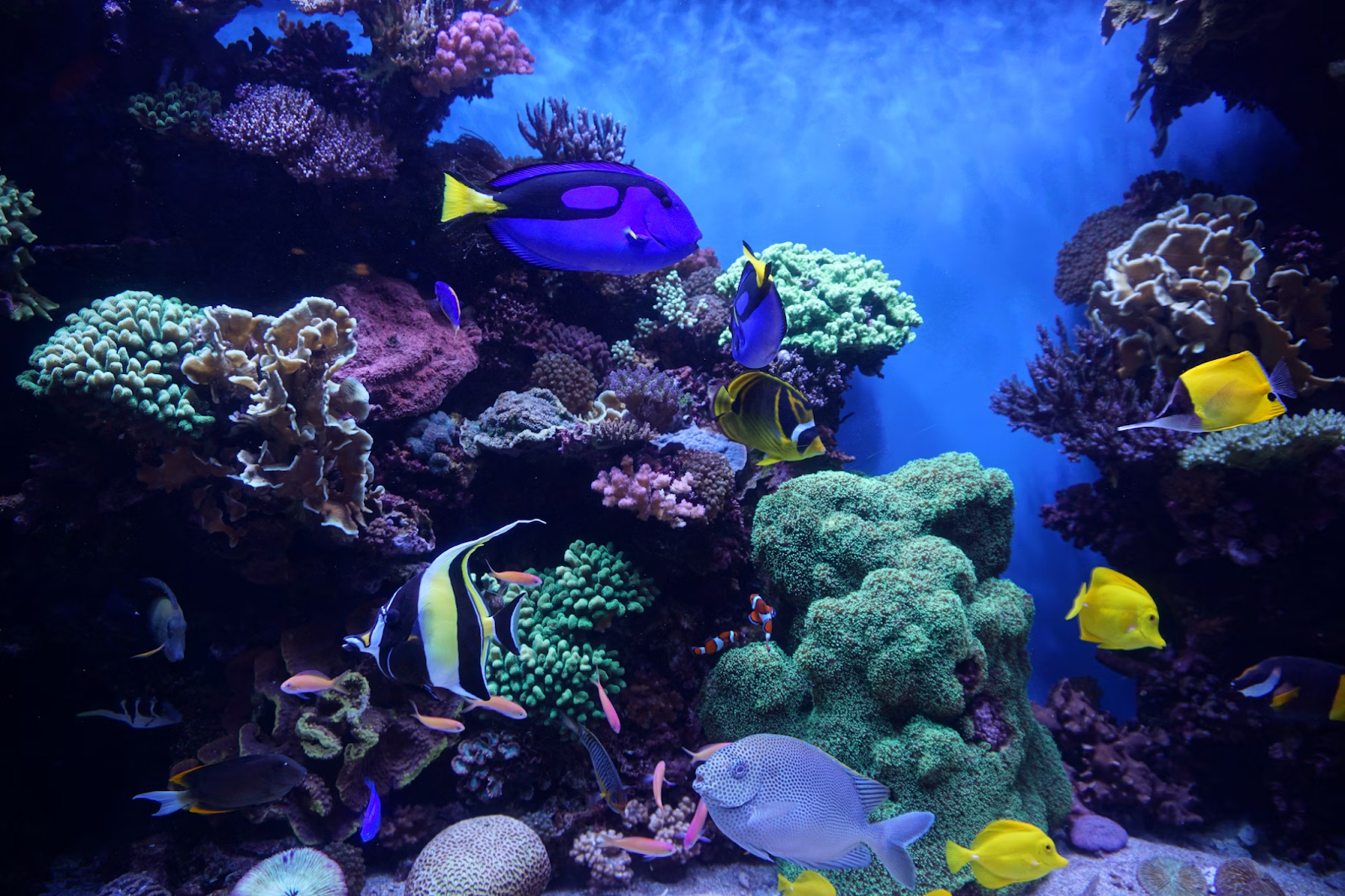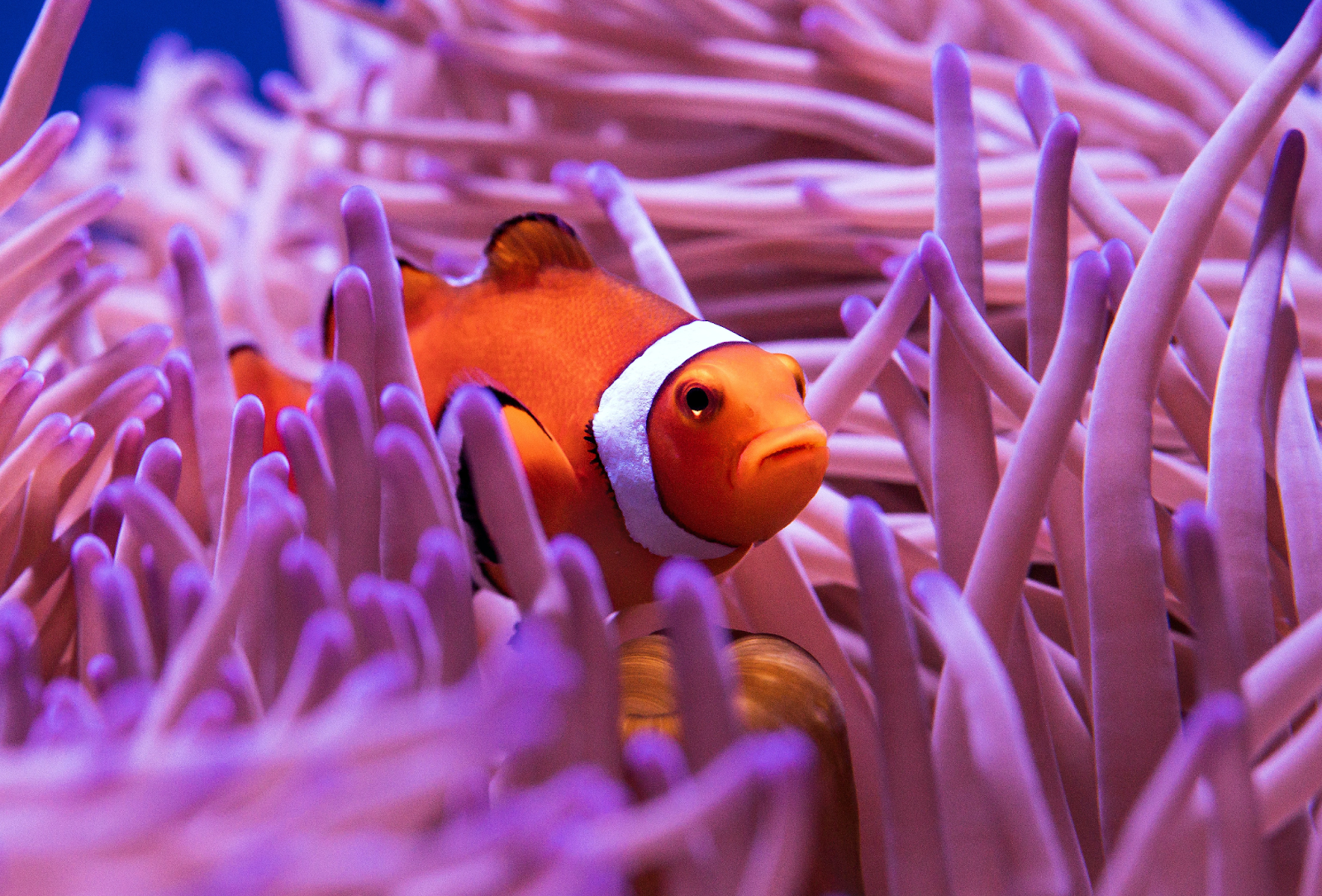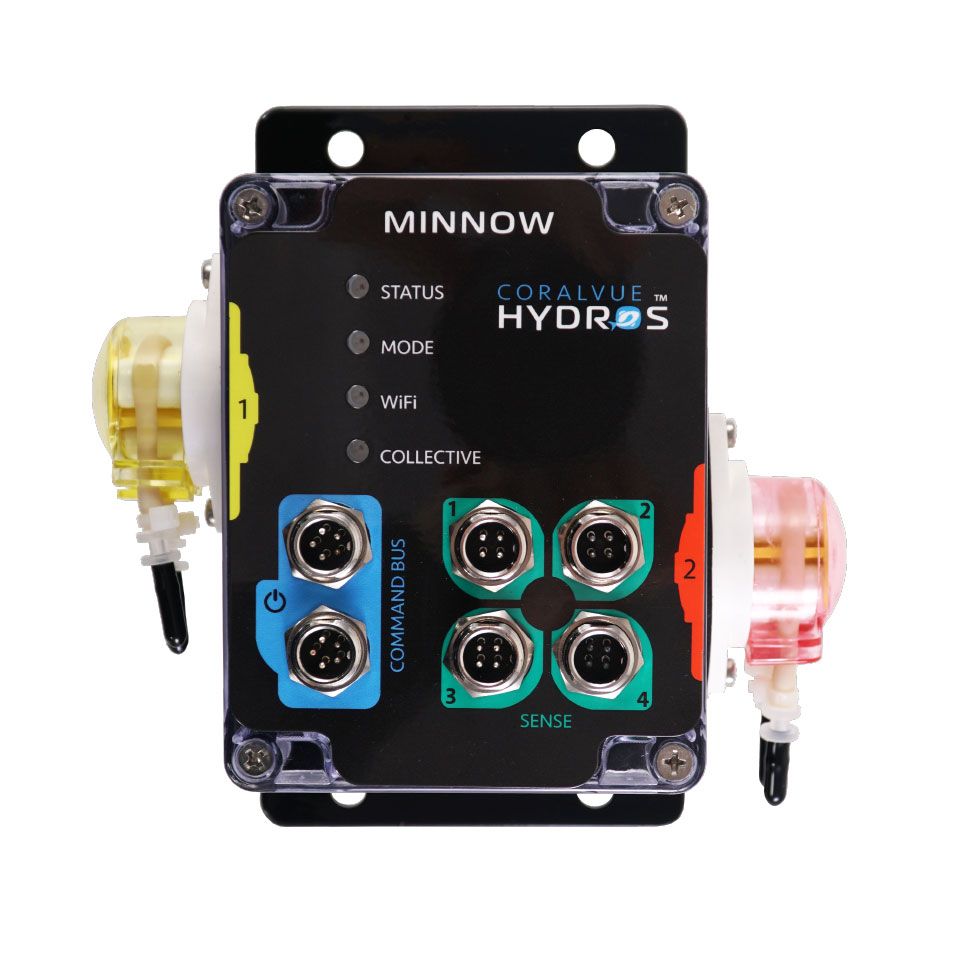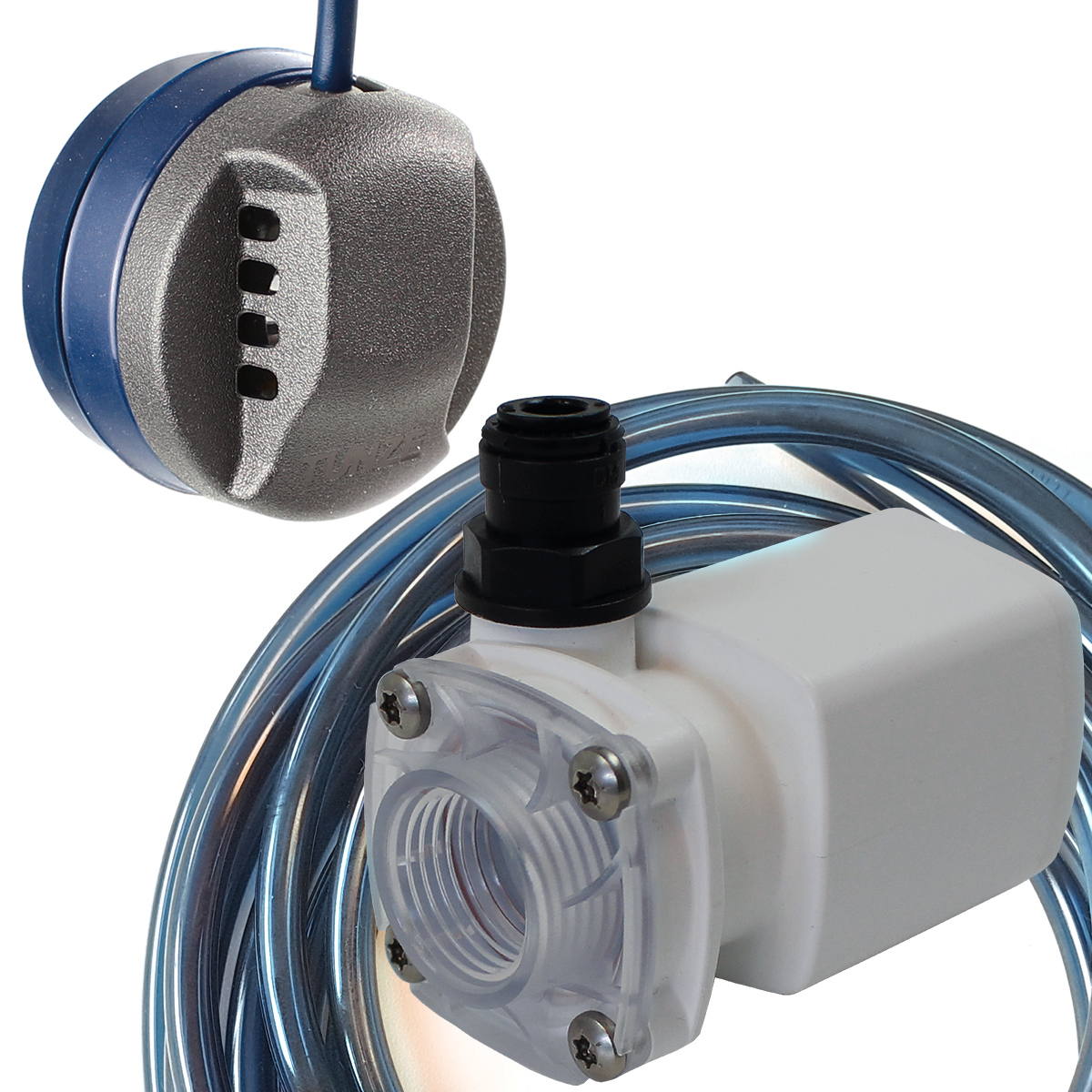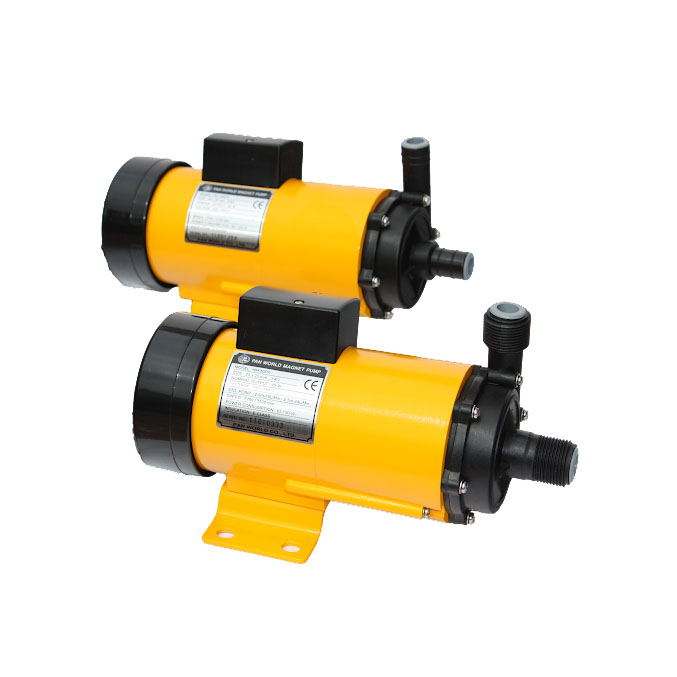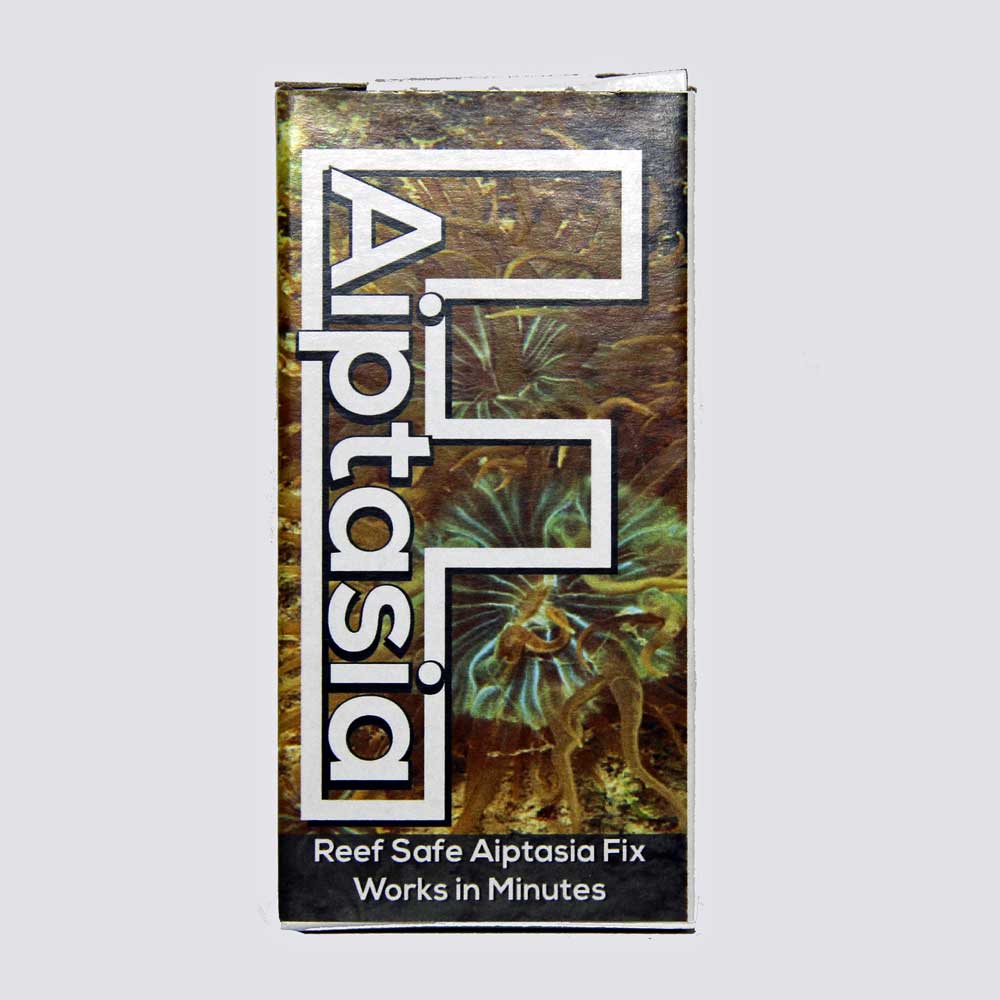We are pleased to announce that captive bred Potter’s Angelfish are available now from the Biota Group. Not only is this exciting for the hobby it just further proves to me and others in the hobby that together we can impact our environment in positive ways though research and conservation. The initial stock will only be available through local fish stores so expect the pricing to vary from store to store.
The information below was just announced by the Biota Group.
The combined team of The Biota Group and Hawaii Pacific University – Oceanic Institute is proud to announce the commercial availability of captive bred Hawaiian Potter’s Angelfish. Potter’s Angelfish have not been readily available in the pet trade for many years, until now. Thanks to the team’s efforts, this popular and long-awaited dwarf angelfish has been reintroduced to the aquarium trade.
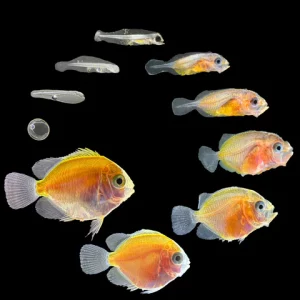
Potter’s angelfish larvae photo credit Kent Glover
Since this first batch is small while we improve on increasing production for this species, there is limited availability. For this reason, these captive bred Potter’s Angelfish will be initially only available through local aquarium stores. If you’re interested in having your own captive bred Potter’s angelfish, ask your local store to order one for you.
Wild caught Potter’s Angelfish do not acclimate easily to captive conditions and are well-known for being finicky feeders. Captive bred fish are a better alternative, being conditioned to aquariums all their lives and already eating prepared foods that are easy to use and available to aquarists.
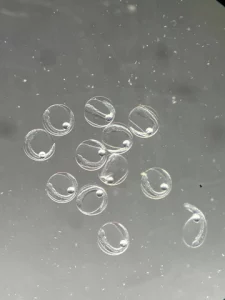
Potter’s angelfish eggs photo credit Kent Glover
Adult Coral Beauty Angelfish ideally should be housed in an aquarium of 65 gallons or more. This species is territorial with its own kind and other dwarf angels, but is compatible with large angelfish species. Like other angelfish, Potter’s Angelfish are sequential hermaphrodites. They begin life as females, and the most dominant turn into males. Captive bred dwarf angelfish may be kept in pairs if individuals from the same batch are added to a large aquarium at the same time.
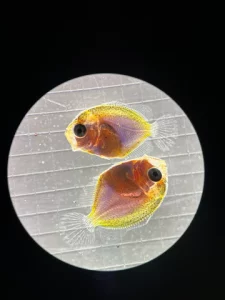
Potter’s angelfish larvae photo credit Kent Glover
This dwarf angelfish species typically grows to about 4” in captivity. They are considered to be “reef safe with caution,” and they may pick at soft corals, clams, and fleshy LPS. Frequent feedings of nutritious foods might prevent coral picking behaviors.
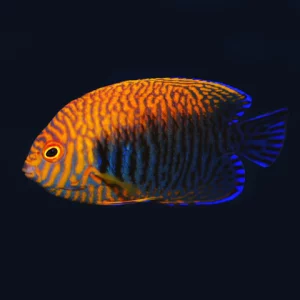
Wild adult Potter’s angelfish photographed in 2012 credit Felicia McCaulley
Visit the Biota Website to learn more about the Biota Group, their business and conservation efforts.










